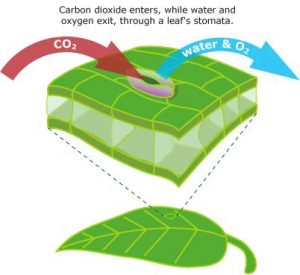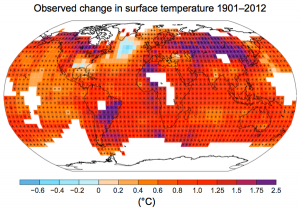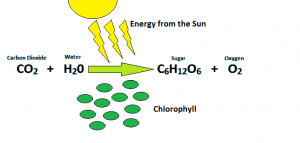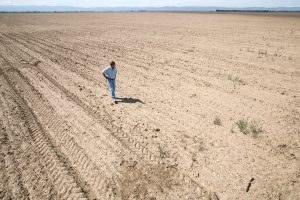With the large scale funding cuts of the Environmental Protection Agency in the USA, the current rapid rates of climate change and CO2 release show no hope of stopping.
But seeing as though plants breathe using CO2 (through the process of photosynthesis), and use carbon in their growth, surely the increased amounts of CO2 being pumped into our atmosphere is a good thing for plants? As studies have shown; perhaps not…
Plants require very specific environmental conditions to function efficiently, and any changes in these conditions can be detrimental. Although it has been shown that increased CO2 initially causes an increase in the rate of photosynthesis and growth of leaves and roots (Taylor et al 1994), generally, in the long-term, the stimulation of photosynthesis is actually suppressed!
This is mainly due to negative effects on the plants function, such as the build-up of excess starch (sugars) in leaves via increased photosynthesis, hindering breathing of CO2 via pores; called the stomata (Makino & Mae 1999), and increased CO2 also causes the stomata to partially close (Singh 2009), resulting in an inability to respire efficiently (Ryan 1991).

The failure to respire efficiently can cause the death of many food crops globally that are vital to feeding our populations!
Increased environmental CO2 also results in global warming due to increased reflection of the Sun’s radiation back to the Earth’s surface; and a temperature increase of 2-3⁰C over the next 30-50 years (IPCC 2007) is predicted to cause problems for our crops. For example, warmer temperatures affect plants mainly when they are developing, and this has been shown to reduce the numbers of our food crop plants by 80%-90% (Hatfield & Prueger 2015), having dire consequences for our food supplies!

Climate change is also set to increase the frequency of extreme weather events (Rosenzweig et al 2001). With increased storms and flooding drowning plants in some areas, and in other areas increased drought, resulting in a lack of water for plants to function with, which they rely heavily on for processes such as photosynthesis, vital for growth and survival. The equation for photosynthesis is shown below, in case you have forgotten…

With increasing global temperatures, drought affected areas will increase from 15.4% to 44.0% by 2100 (Li et al 2009) – resulting in less land to grow crops, which will be disastrous for our food security, along with the fact that the number of suitable growing days per year for our crops will decrease by 11% by the year 2100 (Mora et al 2015)!

With the saying “Feed the World” becoming more and more poignant, our future looks bleak, as we are set to have less food security per person than ever before due to the detrimental effects that climate change will have on plant function. Also, plants not only provide food, but are also at the heart of our medicines and resources! So maybe Donald Trump ought to reconsider his views on climate change before threatening his new healthcare system before it has begun.
Word Count: 500
References:
Hatfield, J. and Prueger, J. (2015). Temperature extremes: Effect on plant growth and development. Weather and Climate Extremes, 10, pp.4-10.
IPCC, (2007). Climate Change 2007: Impacts, Adaptation and Vulnerability. New York: Cambridge University Press, p.17.
Li, Y., Ye, W., Wang, M. and Yan, X. (2009). Climate change and drought: a risk assessment of crop-yield impacts. Climate Research, 39, pp.31-46.
Makino, A. and Mae, T. (1999). Photosynthesis and Plant Growth at Elevated Levels of CO2. Plant and Cell Physiology, 40(10), pp.999-1006.
Mora, C., Caldwell, I., Caldwell, J., Fisher, M., Genco, B. and Running, S. (2015). Suitable Days for Plant Growth Disappear under Projected Climate Change: Potential Human and Biotic Vulnerability. PLOS Biology, 13(6), p.e1002167.
Rosenzweig, C., Iglesius, A., Yang, X., Epstein, P. and Chivian, E. (2001). Climate change and extreme weather events – Implications for food production, plant diseases, and pests. Global Change & Human Health, 2(2), pp.90-104.
Ryan, M. (1991). Effects of Climate Change on Plant Respiration. Ecological Applications, 1(2), pp.157-167.
Singh, S. (2009). Climate change and crops. 1st ed. Berlin: Springer, pp.5-6.
Taylor, G., Ranasinghe, S., Bosac, C., Gardner, S.D.L. and Ferris, R. (1994). Elevated CO2 and plant growth: cellular mechanisms and responses of whole plants. Journal of Experimental Botany, 45, pp.1761-1774.
Recent Comments